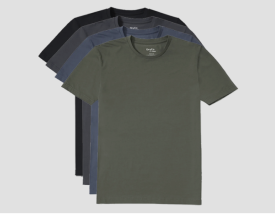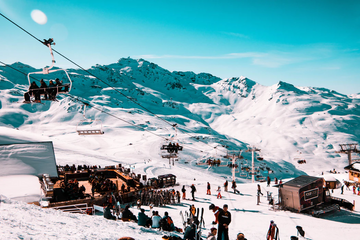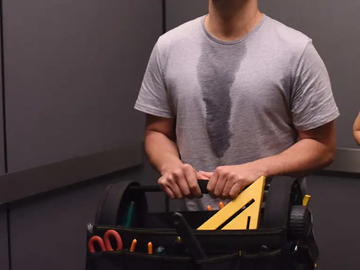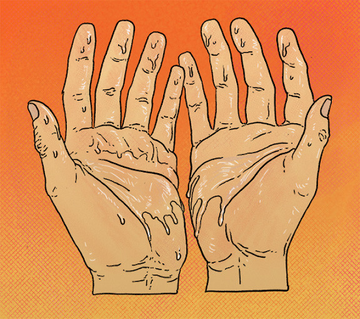Getting sweaty on the mountain can ruin a good ski day. All the activity and thrill on the way downhill can work up a sweat. Going back up the lift cold and wet is a quick way to put a damper on your day.
We take a look at some tips to help keep you warm and dry on your next ski trip.
Base Layer
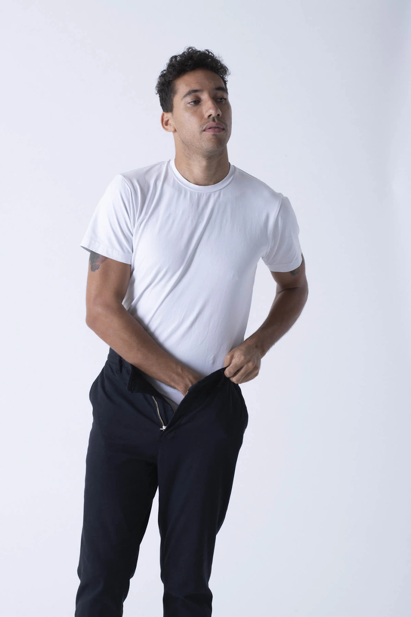
Start your layering with your base. While you may add or remove outer layers as the day gets warmer or cooler, your base layer is going to stay on all day. As such, this is where you want to make sure you have the most comfortable and effective clothing.
For your base layer, you want a comfortable, moisture-wicking fabric. This layer helps retain heat while also reducing and removing sweat.
A sweat-proof undershirt is your best option here. The shirt is designed to be worn under other clothing, making it a comfortable fit as your base layer. Using a regular t-shirt may cause bunching or an irregular fit that becomes uncomfortable throughout the day.
The sweat-proof fabric helps to wick away any moisture as it forms. Combined with breathable materials, this helps to reduce the amount of sweat produced, and get rid of any before you become wet, cold, and uncomfortable. As a result, you can keep dry all day whether you’re on the bunny hills or shredding down a double black diamond.
Middle Layer
Your middle layer goes in between your base and your jacket. For this layer, you want something that is warm, but still breathable. Your wind protection comes from your outer layer, so breathability won’t affect your warmth, but will ensure your base layer can still effectively wick away sweat.
Natural fibers, like wool, make good options for the middle layer. Pay attention to how cold the day is supposed to get when choosing how thick of a middle layer to wear. If you’re uncertain, consider packing a second option to switch into during the day.
Outer Layer
While your base and middle layer help protect you from moisture building up inside, your jacket protects you from wet snow and cold winds.
When you’re hitting the slopes, you’re best off wearing a jacket specifically designed for skiing or snowboarding. These often have built-in snow skirts that help keep snow out of your clothes when taking a tumble or sitting down to adjust bindings.
Another important thing to consider is zippers. Your jacket traps a lot of heat, and zipper openings are the best way to let some heat escape.
Look for jackets and snow pants that have zippers in the armpits and crotch. You can open these up while you go downhill, keeping you cool during activity. This reduces perspiration and gives a place for sweat to dissipate. On the chair lift, you can zip back up to stay warm.
Next, consider the shell of the jacket. Some jackets are available just as a shell or with a removable fleece lining. The shell is what protects you from the wind and the wet, so you’ll want to make sure you have that. But on warmer days, you may want to stick with just the shell, so you can avoid overheating.
Head

You can’t talk about bundling up without talking about headwear. While the old myths of losing over half our body heat through our head are proven false, we still lose up to 10% of body heat here. 10% is no small factor, so we want to make sure to take special care.
Even if you aren’t hitting up the terrain park, it’s always a good idea to wear a helmet on the slopes. Icy patches are all over and without protection, a fall can do serious damage. With your helmet, make sure it has ventilation. This will allow you to let off body heat without leaving your head vulnerable. If you get too cold, you can always add a light toque underneath.
If your face and neck are cold you can wear a half mask or balaclava. These keep your face as warm as a scarf but are easily removable and you can store them in your pocket. This way, you can take them off if you’re too hot downhill, but need more warmth on the ride back up.
